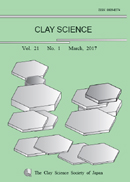In the paper, we synthesize current data on the hydrothermal alteration, microthermometry, and stable isotopic compositions together with published data on K-Ar ages and hydrology in order to understand the environment of mineral-fluid interaction conductive to metallic ore deposit in the Toyoha hydrothermal system. On the basis of our mineralogical data and published K-Ar dating data, hydrothermal alteration prevailed in the Toyoha system can be divided into at least three different stages: I, II, and III. The alteration of stage I, which took place before 12 Ma in connection with granitic activities, is characterized by pervasive propylitic alteration consisting of four hydrothermal alteration zones: biotite, epidote-actinolite, illite-chlorite, and corrensite zones with decreasing temperature. The zonal arrangement is nearly parallel to the stratigraphic boundaries in the Toyoha area, though it was modified by later geologic events to some extent. The alteration of stage II is also of propylitic in nature as a whole, but it accompanied the formation of specific minerals such as allanite and tourmaline along with K-feldspar, relatively Fe-rich chlorite, and 2M_1 illite. Insignificant ore deposition of base metals was locally associated with hydrothermal activity of this stage. The occurrence of the above specific minerals was close to granitic intrusion which took place at about 10 Ma, suggesting that there was significant contribution of magmatic components in fluids responsible for the alteration, compared to the propylitization at stage I. The alteration of stage III took place for the last 3 my and brought on the ore deposition in Toyoha veins and the adjacent district. The ore mineralized zone was enveloped by the kaolin minerals zone and in turn the mixed-layer minerals zone toward the upper surface. Remarkable silicification occurred upon the surface along the Yunosawa fault. The development of hydrothermal alteration zones together with the ore deposition at Toyoha resulted from large-scale hydrothermal fluid circulation. The ancient temperature distribution during the alteration of two stages I and II was estimated using the chlorite geothermometry, along with the distribution of alteration minerals and microthermometric data. On the other hand, the environment of mineral-fluid interactions in the alteration of stage III was analyzed in more detail using fluid inclusion data, carbon and oxygen isotopic compositions of calcite and rhodochrosite, and geochemical calculations of fluid recovered from TH-6, in addition to the use of chlorite geothermometry. The ore deposition was caused by the mixing of ascending deep fluid and descending ground water. The chloride concentration of ascending deep fluid was probably lower in the eastern peripheral area, compared to those of fluids responsible for the formation of major ore veins. The conclusions obtained here, though they were actually derived from studies of drill cores adjacent to the Toyoha epithermal ore deposit, provide insight into understanding the environments conductive to metallic ore deposition at Toyoha.
抄録全体を表示
